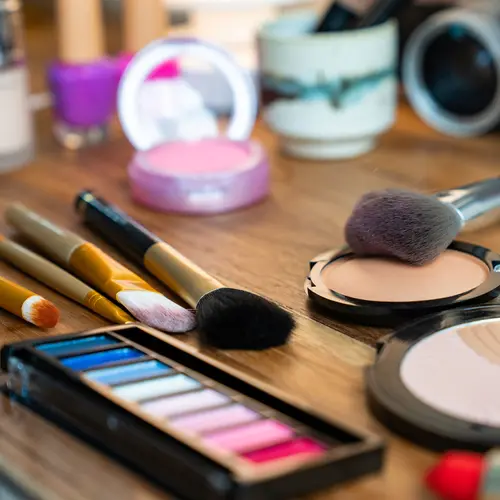Ashley Jones, an account manager, in Rockville, Md., asked how she could help her skin after a rough winter. Dermatologists Glenn Kolansky, MD, and Rachel Herschenfeld, MD, shared their best de-winterizing solutions.
Q: Winter did a number on my face -- my skin is dry, flaky, and irritated. How can I give it a fresh start for spring?
Dr. Kolansky's top picks:
First, don't make the mistake of over-scrubbing, over-cleaning, and over-treating. Frosty temperatures may have damaged the outermost protective layer, exposing facial skin to irritants and bacteria.
Hydration and exfoliation are the keys to smoother skin for spring. Slough off dry skin cells with a gentle exfoliator like Olay Skin Smoothing Cream Scrub, which combines a conditioning beta-hydroxy acid formula with microbeads. Beta-hydroxy acids loosen the dead cells of the epidermis, making room for new growth.
A mild unscented soap that won't strip away natural oils, such as Aveeno Ultra-Calming Foaming Cleanser, will reduce moisture loss and maintain a healthy outer-skin layer. Skip the washcloth and use a cleaning device like the Clarisonic Mia Sonic Skin Cleansing System for a deeper clean. The brush has hundreds of bristles that lift and whisk away dead skin and dirt.
Rebuild your skin's outer layer with a barrier repair moisturizer such as Cetaphil Restoraderm Skin Restoring Moisturizer, which boosts hydration and reduces water loss. Don't forget to add sunscreen -- SPF 30 or higher. Then add a makeup packed with moisturizers and vitamins (and more sunscreen). One to try: Bare Escentuals bareMinerals Original SPF 15 Foundation.
Dr. Herschenfeld's top picks:
Most women find they need to moisturize more in the winter when the humidity drops and skin gets drier. Yet because skin can feel raw and sensitive, they're likely to skip exfoliation. The result is a dry, flaky complexion at the start of spring.
The best way to start anew is to exfoliate dry winter skin without leaving your face red and irritated. Mildly abrasive cleansers or ones with mild exfoliants like glycolic or lactic acids help eliminate flakes. For an at-home treatment that doesn't harm weather-worn skin, try a face mask that sloughs away dead cells, such as REN Glycol Lactic Radiance Renewal Mask, a blend of lactic, citric, and glycolic acids.
Exfoliate only a few times a week. Every other time, wash with a gentle cleanser like CeraVe Hydrating Cleanser, which has epidermis-softening ceramides to help skin retain moisture.
At night, apply a moisturizer with glycolic acid, lactic acid, or salicylic acid, which helps the gentle sloughing away of dead skin continue while you sleep. Try Vivité Night Renewal Facial Cream. Be sure to moisturize soon after washing your face, when the skin is still hydrated from the water it absorbs during cleansing. This technique locks in more water than when you apply lotion to dry skin.
For smoother-looking skin, Bare Escentuals i.d. bareVitamins Skin Rev-er Upper is a must-try. Apply this primer lotion, infused with salicylic and glycolic acids, before makeup. Finally, always use a sunscreen with an SPF 30 or higher to prevent sun damage and skin cancer.
The opinions expressed in this section are those of the experts and are not the opinions of WebMD. WebMD does not endorse any specific product, service, or treatment.
Skin Product Expiration Guidelines
Ensure your beauty stash is fresh with these when-to-toss guidelines from dermatologist Roberta Sengelmann, MD, of the Santa Barbara Skin Institute in California.
Sunscreen
The FDA requires sunscreen makers to post expiration dates on the packaging. Toss any SPF product that is expired or more than three years old.
Eye cream
Chuck it after three months, or sooner if it has changed colors, smells funny, or stings when you put it on.
Body lotion
Keep for up to a year unless it stinks or has changed colors.
Mascara
The eyes are very sensitive to dirt, debris, and bacteria, so toss after three months.
Lipstick
Lipstick doesn’t penetrate the skin, so it’s safe in your makeup bag for up to two years. The color and texture may change slightly over time.
Liquid foundation and facial moisturizers
Whether packed with antioxidants and alpha-hydroxy acids (glycolic, lactic, malic) or not, they're good to go for up to six months.


